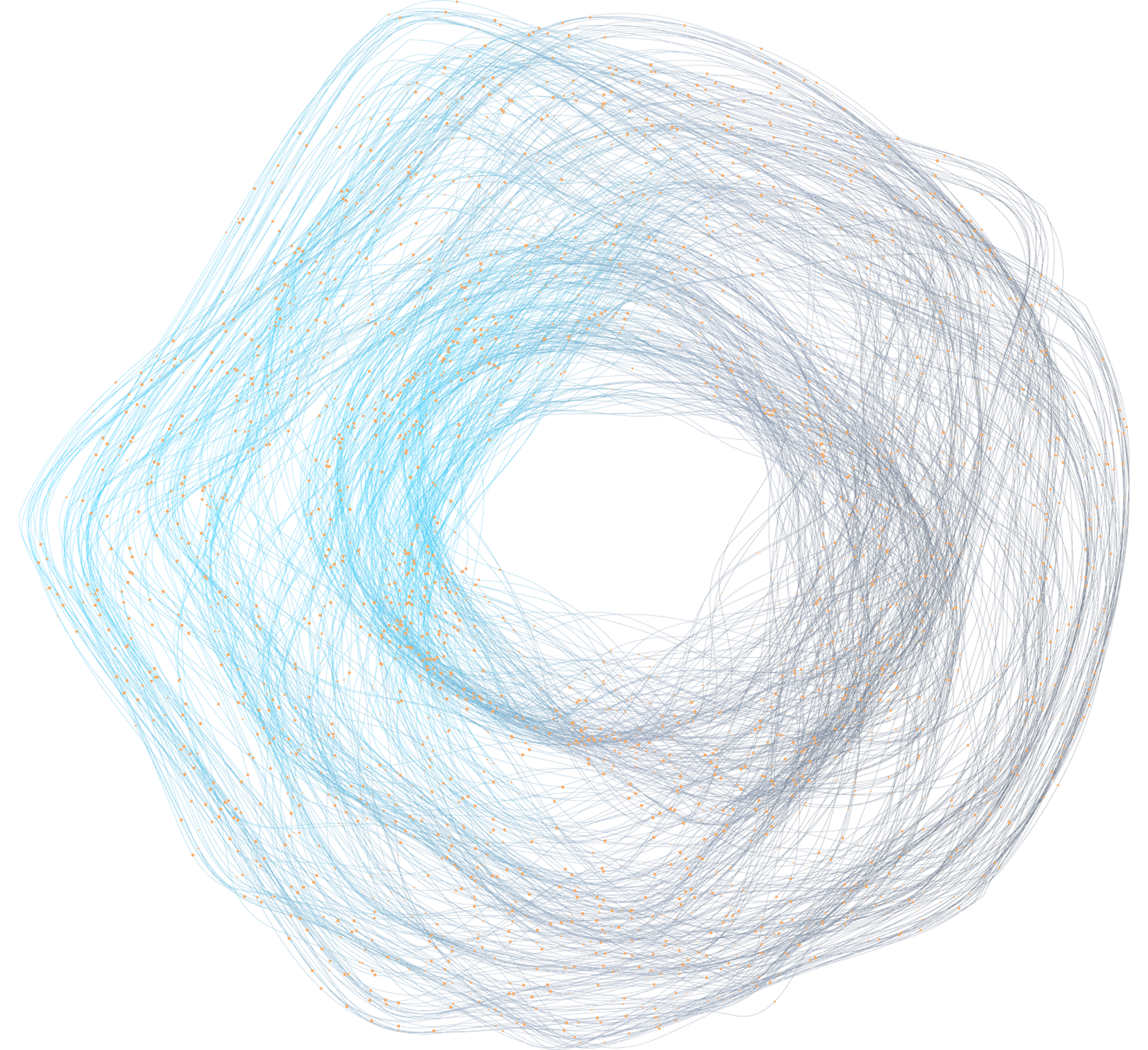article
Why Your HCLS Data Strategy is Incomplete Without an Operational Data Layer

SECTIONS
In today's healthcare landscape, data is the undisputed king. We're awash in it – clinical records, claims information, patient-generated data, operational metrics, and more. Yet, for many organizations, this abundance feels more like a deluge than a goldmine. The persistent challenge? Transforming this vast sea of data into a unified, trusted, and actionable asset that can drive better outcomes, streamline operations, and foster innovation.
Many attempt to tackle this by layering on new applications, hoping the latest software will magically solve underlying data chaos. However, this often leads to more silos, increased complexity, and a continued struggle to achieve a holistic view of the enterprise. Application-layer solutions, while having their place, are fundamentally insufficient for solving deep-rooted data-layer problems. The real, sustainable solution lies in establishing a robust operational data layer, often manifested as a comprehensive Health Data Management Platform (HDMP).
Beyond Silos: Understanding the Operational Data Layer
This isn't just about another database or a fancier analytics tool. An operational HDMP serves as the central, governed, and bi-directional foundation for all your enterprise data. It’s where information from provider systems, patient records, claims processing, payer networks, and myriad other sources is unified, cleansed, mastered, and made reliably available to any application that needs it in, customized to the receiving application’s needed format.
This is fundamentally different from an analytical platform, which typically operates as a one-way street: data flows in, insights are generated, but those insights and the improved data often remain locked within the analytics console. An operational HDMP, in contrast, is built for dynamic, two-way interaction. It doesn't just feed your analytics engines; it ensures that clean, consistent, and context-rich data is actively supplied to all your applications – from core administrative systems and CRMs to patient portals and, yes, even FHIR servers for interoperability. This approach ensures real-time synchronization, keeping all connected systems in lock-step.
Introducing the Solution: The Coperor Health Data Management Platform
This is precisely where a solution like the Coperor™ Health Data Management Platform steps in to embody the operational data layer. Coperor is engineered to connect all your disparate healthcare systems, acting as a central hub where data isn't just moved, but actively synchronized in real-time. It employs a vast, pre-built yet flexible healthcare data model, refined over years and encompassing thousands of elements across dozens of interconnected domains like provider, patient, claims, and clinical data.
This approach allows organizations to map their varied data landscapes into a single, unified structure, breaking down the silos that traditionally obscure a holistic view. With native master data management at its core, Coperor excels at matching, merging, cleansing, and de-duplicating data, ensuring that a single source of truth for key entities is established and maintained.
Bi-Directional Information Flow
The power of the Coperor Health Data Management Platform as an operational data layer is further amplified by its bi-directional data flow and flexible data subscription capabilities. This means that operational systems can selectively subscribe to the data they need, with customizable conditions and timing for updates. Changes made in one system are automatically reflected in all connected systems, ensuring everyone accesses the latest information.
Whether it's transforming data into specific formats like HL7 to JSON or FHIR to CSV for downstream systems without losing lineage or linking to transactional data stores to support complex governance rules, Coperor ensures that the right data, in the right context, is always available across your healthcare ecosystem. This moves organizations beyond simple data integration to true, synchronized, and operationalized data intelligence.
The Non-Negotiable Benefits: Powering Your Entire Enterprise
Investing in an operational data layer isn't a luxury; it's rapidly becoming a necessity. The benefits ripple across the entire organization, creating a stable bedrock for myriad strategic initiatives.
Establishing a Single Source of Truth
At its core, an operational HDMP establishes a single source of truth. This is a term often used, but rarely truly achieved without a dedicated data layer. It means breaking down the pervasive data silos that plague healthcare, where provider, patient, and claims data live in disconnected islands, losing context and quality over time. By unifying diverse data domains into a comprehensive model, organizations gain an unparalleled 360-degree view of their operations, patients, and providers. This foundational consistency drastically reduces the "poor data quality footprint," such as duplicates and other unforced errors, leading to increased trust in data across every department.
Driving All Enterprise Use Cases
Crucially, this unified data layer powers all enterprise use cases. It’s not a one-trick pony. Consider FHIR, the standard driving much of the interoperability conversation. While helpful for interoperability, FHIR is only a data exchange mechanism; it doesn't inherently fix underlying data fragmentation or quality issues. An operational HDMP provides the clean, governed, and contextually rich data that makes FHIR exchanges meaningful and reliable, rather than just another conduit for potentially flawed information. It supports FHIR APIs and can convert non-FHIR native data into FHIR resources, ensuring seamless integration.
Achieving Analytics You Can Trust
Beyond FHIR, this robust data foundation is critical for analytics you can actually trust. The "garbage in, garbage out" principle holds true; an operational HDMP ensures that high-quality, validated data feeds your analytical platforms, leading to more accurate insights and confident decision-making.
Streamlining Daily Operations & Compliance
This extends to streamlining daily operations. Core administrative processes like claims adjudication, provider network management, and patient onboarding become more efficient when powered by consistent, reliable data flowing bi-directionally into and out of operational systems. Regulatory compliance also becomes less burdensome when data is accurate, auditable, and readily accessible from a central, governed source.
Fueling Future Innovation and Advanced Capabilities
Furthermore, an operational HDMP is the launchpad for advanced capabilities and future innovation. Initiatives like AI, machine learning, and the broader vision of "intelligent health" are entirely reliant on accessible, high-quality, and AI-ready data. The bi-directional nature of this data layer is key: data isn't just passively stored; it's actively managed, and updates can be synchronized back to source systems or propagated to other consuming applications, ensuring the entire ecosystem operates on the most current information. This creates an agile and adaptable data infrastructure, capable of incorporating new data sources and evolving business requirements with far less friction than siloed, application-dependent approaches.
The Strategic Shift: From Application-Centric to Data-First Thinking
The traditional approach of adding yet another application to solve a data-related problem is proving unsustainable and often counterproductive. It frequently leads to increased costs, more integration headaches, and a more fragmented data landscape. A truly transformative approach requires a shift in mindset: from application-centric to data-first. This doesn't mean abandoning specialized applications. Instead, it means providing those applications with a reliable, unified, and actively managed data foundation through an operational HDMP. Such a platform works from the data layer up, offering robust data management capabilities with purpose-built application functionalities where needed, rather than the other way around.
Conclusion: Building Your Data Future on Solid Ground
An operational data layer, embodied by a comprehensive HDMP like the Coperor Health Data Management Platform, is more than just infrastructure; it's a strategic enabler. It’s the central nervous system that allows your organization to unify diverse data streams, exert control over data quality and governance at every point, transform data into any required format without losing integrity, and synchronize it across all necessary systems and partners. By investing in this foundational layer, healthcare organizations can finally move from being overwhelmed by data to being empowered by it, paving the way for genuine innovation, improved efficiencies, and ultimately, better health outcomes.
Contact us to discuss your data challenges with our health data management experts or to get a demo.

